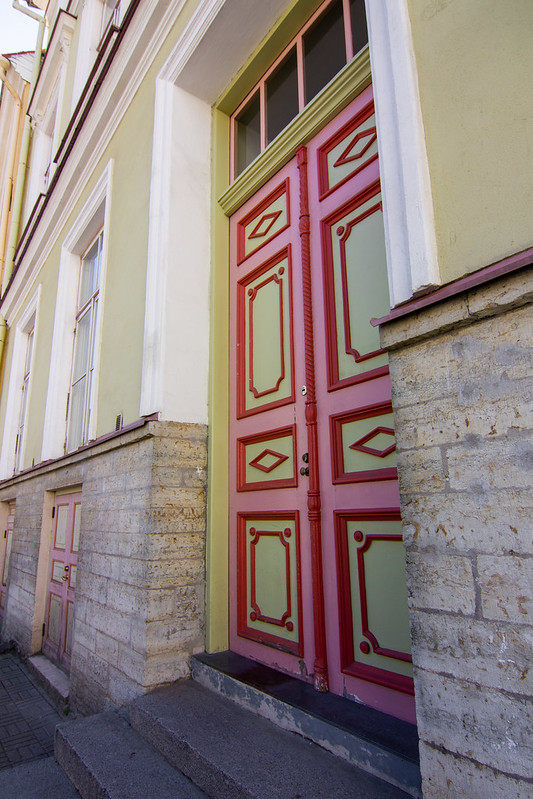
Nestled in the northwest of Spain, the lush region of Asturias seems to have it all. Known as "Spain's natural paradise", Asturias is home to breathtaking scenery, colorful fishing villages, outdoor adventures, and most importantly (in my opinion), renowned gastronomy. Whether you're an adventure enthusiast or simply a connoisseur of sidra and Cabrales cheese, you won't be disappointed by the sublime beauty of Asturias.

Colorful Cudillero
During my three years living in Madrid, I was lucky enough to visit Asturias twice. On the first trip, a group of us stayed at the beach in Santa María del Mar and visited Luanco, Salinas, the arresting cliffs of Cabo de Peñas, and Cangas de Onís - where we kayaked down the Río Sella and explored the mountainous sanctuary of Covadonga. Feeling insatiable after my first visit, two years later I visited a fellow English teaching friend and we went on a culinary pilgrimage through Oviedo, Cudillero, and Gijón.
One trip was packed with adventure while the other was mostly dedicated to eating, drinking, and leisurely exploring - precisely illustrating that Asturias has something to offer for everyone. In "Spain's natural paradise", you don't even have to be a nature lover to enjoy yourself. (But I dare you not to fall in love with their nature. Trust me.)
OVIEDO

Oviedo is an ideal home base if you're planning on traveling throughout the region of Asturias. Of course its old town has all the typical requirements of quintessential Spanish charm: pretty plazas, striking colors, a grand cathedral, and quaint shops. You could spend hours just ambling through the picturesque streets (and you should). But those aren't even the best parts...



What really puts Oviedo on the map, or even just Asturias in general, is its phenomenal regional cuisine. First and foremost: Asturian sidra. This hard apple cider is nothing quite like what we may know from home; it's tart and slightly funky, made with no added sugar or yeast. Since it has no added carbonation, traditional sidra pouring takes a creative approach to add a bit more effervescence. (Read on to see how they do it.)
Trying sidra in Oviedo is a must, and you really can't go wrong with most places on Calle Gascón. For something different (and much sweeter), try the sidra sangria from La Competencia.



You're going to need some food to soak up all that sidra, and lucky for you, Asturian cuisine is hearty and warms the soul. Above all, you must try fabada: a rich stew made with buttery fava beans, blood sausage, chorizo, and various cuts of pork.
As the region's signature dish, you'll find no shortage of places serving it up. I had great luck at El Fartuquín, whose menu is entirely gluten free.

Fabada, the signature dish of Asturias
While at El Fartuquín - aka Celiac heaven - we also indulged on their croquetas de jamón, escalopines al Cabrales, arroz con leche with a caramelized sugar crust, and another traditional Asturian specialty that's otherwise seemingly impossible to find gluten free: cachopo.
Much akin to Austria's schnitzel cordon bleu, cachopo is jamón and cheese sandwiched between two steaks, then breaded and fried. And if you're thinking, "Wow, that sounds like a great way to induce a heart attack at the lunch table", you're probably not wrong. It was the most delightful act of gluttony to partake in, and exactly what I was craving on a cold, drizzly day in Oviedo.
After this meal, I have never been so full in my life. Even Thanksgiving pales in comparison. But thankfully this is Spain, and presumably why the post-lunch siesta was invented.

A rich gluten free cachopo from El Fartuquín
CUDILLERO
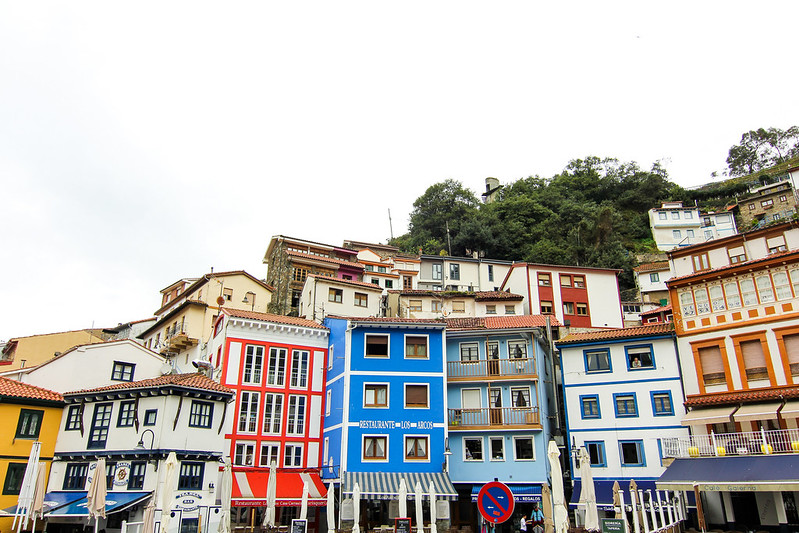
Confession: Instagram made me do it. As soon as I noticed images of this colorful fishing village floating around, I knew I had to go see it for myself.
The town itself may be small and sleepy, and getting to Cudillero is anything but convenient. But the kaleidoscope of homes juxtaposed against the rolling green hills and sparkling Bay of Biscay are truly a feast for the senses.




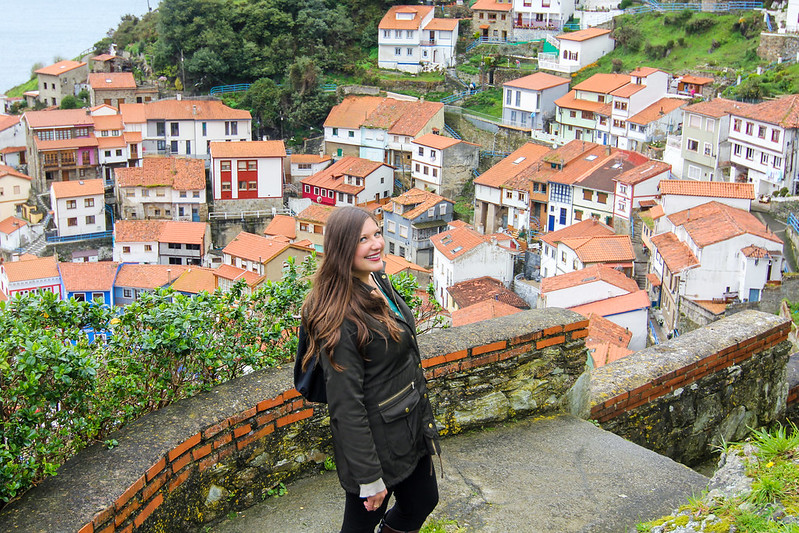


Mil gracias to my host Elisa, who navigated the logistics of getting us here. We took a bus from Oviedo to Gijón, where we then hopped a FEVE commuter train to Cudillero - which crawled along at a glacial pace, but often gave us resplendent views of the mountainous countryside.
Our journey and "hike" to the top of the most scenic viewpoints predictably worked up our appetites. So we headed to Casa Julio for some chorizo a la sidra, mussels in a spicy tomato sauce, and local Asturian cheeses. And it wouldn't be an authentic Asturian cheese plate without queso Cabrales, which is the region's signature blue cheese aged in natural caves.


While I personally may not be an enthusiast, coastal Asturias also has some of the best seafood in Spain
We had a connection in Gijón on our way back to Oviedo from Cudillero, so we strolled around the old town and reveled in its charm. Along with aimlessly strolling, we naturally couldn't resist another filling meal.

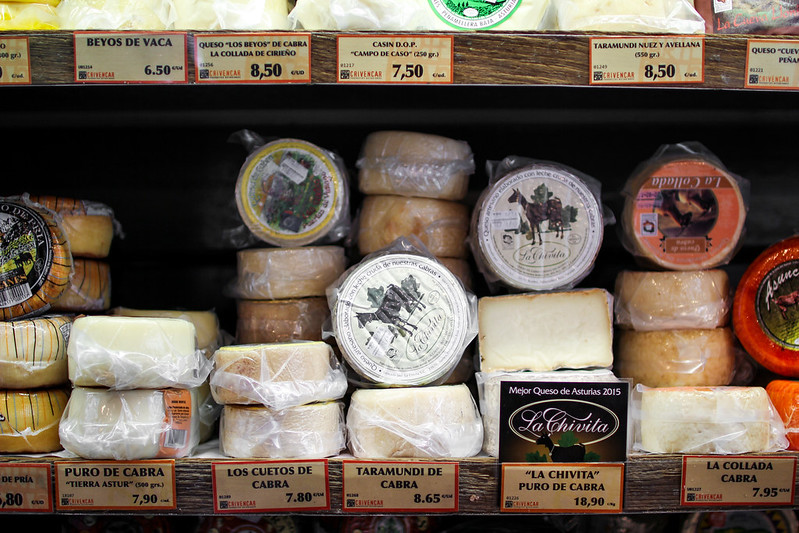


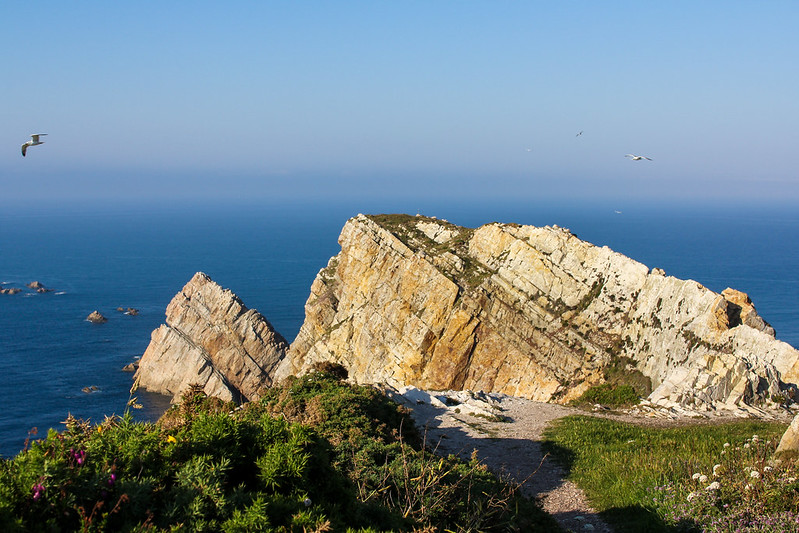

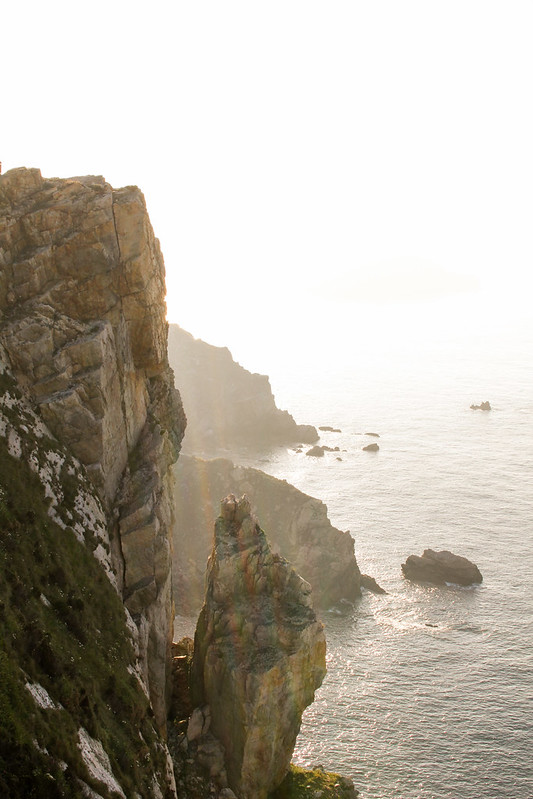


COVADONGA









Basically the Disneyland of regional delicacies, Tierra Astur is a franchise that at first may seem a little gimmicky, but is still damn satisfying. (And potential kitsch factor aside, the locals also really love it.)
I warmed up with a hearty bowl of pote, or stew, alongside more local cheese and of course, sidra. As I mentioned earlier, traditional sidra pouring serves a purpose to enhance the flavor and add more fizz to an otherwise flat and earthy cider. It's also an art form. (Don't try this at home. Or at least, don't try this in MY home. Thanks.)

Pouring sidra is no easy feat
CABO DE PEÑAS


Along with its emerald hills and misty pastures, Asturias is also famed for its rugged coastline. Located on the most northern point of Asturias, the rocky cliffs of Cabo Peñas jut out into the Bay of Biscay and offer majestic views of the northern coast. (Just be warned that the winding roads of Gozón are not for the faint of heart... or stomach.)



COVADONGA

Perched within the Picos de Europa among the wisps of clouds you will find Covadonga: a sanctuary boasting a stunning basilica alongside surreal lakes, caves, and chapels. It's one of the most historically significant places in Spain, for it was here that the Christians won an important battle against the Moors in the year 772.
A trifecta of history, spirituality, and nature, everything about Covadonga is simply awe inspiring.



Nearby you can find the towns of Cangas de Onís and Arriondas, where we kayaked 12 kilometers down the Río Sella with Astur Aventura.
Both trips to Asturias were before I started doing Pilates every day (and before I gave up dairy... * sobs *), so suffice it to say, the kayaking itself was a real struggle at the time. However, regardless of how out of shape I was, it was still one of the most fun activities I did that year.

You don't have to be outdoorsy to fall in love with Spain's natural paradise. While still somewhat under the radar, Asturias is ultimately worth going off the beaten path. You're sure to leave enchanted.













